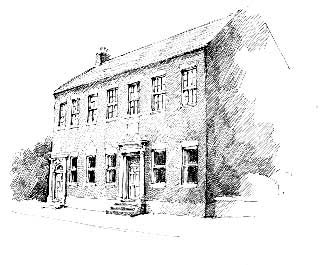Northumberland
NORTHERN SAINT ∗ HOLY ISLAND
∗ THE MAN WHO INVENTED THE 20TH CENTURY
∗ NORTHUMBERLAND GREYS ∗ TEA
Lindifarne Priory, a cradle of English Christianity.
NORTHUMBERLAND FOLK
Admiral Lord Collingwood ∗ Emily Wilding Davison ∗ Mary Astell ∗ Sir George Airey ∗ Jackie Milburn ∗ Jack and Bobby Charlton
St Cuthbert
635–87
Lying off the coast of Northumberland is LINDISFARNE, or Holy Island, one of England’s most sacred places and spiritual home of Northern England’s patron saint, ST CUTHBERT.
Born in 635, Cuthbert became a shepherd boy in the Northumbrian hills and at the age of 16, while tending his sheep, he had a vision of stars falling from the sky, which he interpreted as angels descending from Heaven to carry away the soul of St Aidan, first Bishop of Lindisfarne, who that night had died.
Cuthbert joined the monks of Melrose Abbey and in 664, when the Synod of Whitby settled in favour of Roman Christianity, he was sent to Lindisfarne to help the monks there with the transition from the Celtic traditions. Here he gained a reputation for healing and miracles, and brought great fame to Lindisfarne as a place of sanctuary and retreat.
Craving solitude himself, Cuthbert retired to a rocky islet off Lindisfarne, now called St Cuthbert’s Isle, where he built himself a tiny chapel and fashioned rosaries out of ‘St Cuthbert’s Beads’, tiny fossils found on the shore.
Cuthbert eventually became Bishop of Lindisfarne, where he remained until, feeling his days were coming to a close, he took himself off to lonely Farne Island, where he died in March 687.
Cuthbert was buried on Lindisfarne, where his grave became a place of pilgrimage. Not long after his death the monks there produced a glorious manuscript, illustrated by the new Bishop, Eadfrith, which became known as the Lindisfarne Gospels.
In 793 Lindisfarne suffered the first Viking raid on the coast of England. The monastery was looted and burned, but St Cuthbert’s shrine was fortunately overlooked.
Nearly 100 years later, in 875, Lindisfarne was again threatened by Danish invaders, and this time the monks fled the island along with Cuthbert’s coffin, in which they had placed the head of St Oswald, Christian King of Northumbria, and the Gospels. For the next seven years they wandered through the north of England, seeking somewhere safe to rest their precious burden.
On one occasion, when they were crossing the Irish Sea, the Gospels were washed overboard and the monks despaired, until St Cuthbert appeared to them in a vision and guided them to a spot on the Scottish coast near Whithorn, where they found the manuscript washed ashore and undamaged, except for some minor staining from the sea. The Gospels are now in the British Museum, where they were analysed and found to be indeed marked with seawater stains.
St Cuthbert’s coffin eventually came to rest at Durham, where his shrine is today. Before being placed in his new tomb in Durham Cathedral in 1104, Cuthbert’s remains were examined and his body found to be perfectly preserved, as was the head of St Oswald, which was hence adopted as St Cuthbert’s symbol.
Lindisfarne remains a beautiful, haunting and sacred place, isolated and cut off by the high tide, windswept and crowned at the southern end by a castle built on top of a conical mound 100 ft (30 m) high. The castle was transformed into a private home by Sir Edwin Lutyens in 1903, and is now owned by the National Trust.
Sir Charles Parsons
1854–1931
The Man who Invented the 20th Century
Kirkwhelpington is a sturdy stone village on the edge of the Northumberland Moors west of Morpeth. Standing on a hillock above the Wansbeck is a long, narrow 13th-century church, and in the churchyard is the stone burial plot of the Englishman who gave power to the world, SIR CHARLES PARSONS.
The third son of the Earl of Rosse, he came from a remarkable family of pioneers and inventors already renowned in the worlds of science, astronomy, photography and engineering, and it was therefore not considered too unusual when, after studying mathematics at Cambridge, he took up an apprenticeship at the Newcastle engineering works of William Armstrong. During this time he applied himself to designing a steam turbine engine.
The steam turbine, which converts the kinetic energy of steam directly into rotation, is many times more efficient than the up and down movement of a steam piston engine. Parsons’ prototype was capable of 18,000 rpm compared with the maximum 500 rpm of the average piston engine, and is considered to be the single most important invention in the history of the generation of electricity.
In 1888 Parsons installed his turbine engines in the Forth Banks power station in Newcastle, the first public power station to use turbine generators anywhere in the world. By the time of his death in 1931 all the major power stations in the world had adopted Parsons’ steam turbine generators.
Parsons also designed steam turbines to propel ships. He established the Parsons Marine Steam Turbine Company at Wallsend and in 1895 launched Turbinia, THE WORLD’S FIRST STEAM TURBINE DRIVEN BOAT. In order to demonstrate its phenomenal speed Parsons took Turbinia to the Spithead Review celebrating Queen Victoria’s Diamond Jubilee in 1897, and there, in front of leaders from all the world’s great naval powers, he proceeded to race around the biggest fleet of warships ever assembled, at over 30 knots. The Royal Navy patrol ships sent to challenge Turbinia were unable to catch her, and Turbinia proved herself to be the fastest ship in the world. Within ten years all warships were equipped with steam turbines. In 1906 THE WORLD’S FIRST TURBINE-POWERED BATTLESHIP, HMS Dreadnought, was launched at Portsmouth.
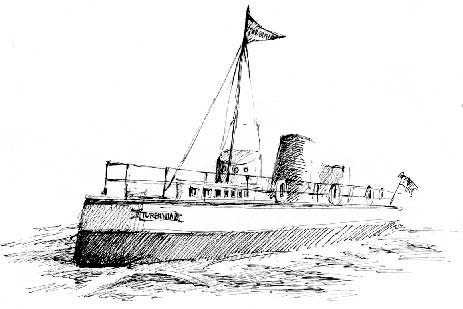
The year before, the Allen Line ships Victorian and Virginian had become THE FIRST TURBINE-DRIVEN PASSENGER LINERS TO CROSS THE ATLANTIC, and in 1907 the Cunard liners Mauretania and Lusitania began regular Atlantic service. Lusitania gained the coveted Blue Riband for the fastest Atlantic crossing a month after her maiden voyage, while Mauretania, built at the Swan Hunter yard on Tyneside, held the Blue Riband for longer than any other liner, over 20 years. Modified Parsons turbine engines powered the liners Queen Elizabeth and Queen Mary as well as the battleships HMS George V and HMS Hood.
The Order of Merit was founded by Edward VII in 1902 to recognise exceptional service to the Crown or the advancement of arts, learning, law and literature, and is the only Order specifically awarded to artists, scientists and intellectuals. It is also one of the few Orders awarded free from political recommendation, along with the Order of the Garter, the Order of the Thistle and the Royal Victorian Order.
Sir Charles Parsons was the first engineer to be admitted to the Order of Merit.
The Greys
‘The lamps are going out all over Europe; we shall not see them lit again in our lifetime.’
These famously haunting words were spoken on the eve of the First World War by the Foreign Secretary, VISCOUNT GREY OF FALLODON, President of the League of Nations, and the longest-serving Foreign Secretary of the 20th century.
The Greys are one of the great Northumberland families. FALLODON HALL, on the coast north of Alnwick, used to have its own private railway station where the Greys had the right to flag down trains on the main line to Edinburgh.
The 1st Earl Grey was a general who introduced marching in step to the British army, a procedure last used by the Roman legions. The 2nd Earl Grey was the Prime Minister who introduced that milestone in the history of English democracy, the Great Reform Act of 1832. He also introduced Earl Grey tea to England.
Tea
The National Drink
TEA was introduced into England in the 1650s, brought in from China by the East India Company and marketed as a tonic that was beneficial to health. First sold by Thomas Garraway at his coffee-house in London’s Exchange Alley, it was made fashionable by Charles II’s wife Catherine of Braganza, daughter of the King of Portugal, the first European country to trade in tea.
Along with tea from China came delicate china cups from which to drink it. These were very fragile and expensive, and the sudden demand for home-produced tea things sparked the rise of the English pottery industry, based at Stoke-on-Trent. Early in the 19th century Josiah Spode invented ‘bone’ china, which proved perfect for tea, being translucent and refined, yet less fragile than porcelain and able to withstand high temperatures.
Once the English had learned to sweeten tea with sugar, it became popular with all classes and during the 18th century even replaced ale as England’s favourite drink.
Boston Tea Party
Throughout the 18th century tea was very heavily taxed, and this led to a great deal of tea smuggling, which hit the profits of the East India Company, who had a monopoly of the tea trade. In order to recoup the losses they were making in England, the Company began exporting to the American colonies. Not only was this tea taxed but the Company was given the sole distribution rights in America. In 1773 three East India Company ships laden with tea arrived in Boston Harbour, but the townsfolk refused to allow the tea ashore or pay the duty, and eventually boarded the ships and threw the tea overboard, in one of the first incidents leading up to the American War of Independence. It is because of the Boston Tea Party that tea is not as popular in the United States as it is in England – patriotic Americans turned to coffee instead.
At the start of the 19th century tea plantations were established in India, using seeds from China, by officials of the East India Company who wanted to grow tea for themselves, and today tea is India’s biggest industry after tourism.
Afternoon Tea
Afternoon tea was the brainchild of ANNA, DUCHESS OF BEDFORD, who in 1840 decided she needed something to keep her going between lunch and the evening meal. Amongst the upper classes dinner was often not served until eight o’clock or later, a custom imported from the Raj in India, where it was sensible not to eat until the heat of the day had cooled. The Duchess ordered her butler to bring her some bread and butter and a cup of tea at 5 p.m., and this proved so refreshing that she began inviting her friends to join her for tea – and a new social occasion was born. The idea soon caught on with the working classes too, who made ‘tea’ into the main meal of the day.
Tea Clippers
While the East India Company had the monopoly of the tea trade, it wasn’t necessary to transport the tea from China to England very quickly, but once the monopoly was broken in the mid-19th century speed became of the essence. The competition to build the fastest tea clipper was fierce, and races between the graceful vessels caught the public imagination. Only one of those tea clippers survives, the CUTTY SARK, which is now berthed at Greenwich.
THE FIRST TEA SHOP was opened in 1864 by the lady manager of the AERATED BREAD COMPANY at London Bridge, who started to sell cups of tea to her customers, and soon there was a chain of ABC tea shops all over London.
In the early 20th century TEA DANCES became popular, while today a great treat is to take tea in a posh hotel such as the Ritz or Browns. Britain is still the world’s largest market for exported tea.
Well, I never  knew this
knew this
about
NORTHUMBERLAND FOLK
Admiral Lord Collingwood
1750–1810
CUTHBERT COLLINGWOOD was born and educated in Newcastle and joined the Royal Navy in 1761, aged just 12. He distinguished himself in the Caribbean during the American War of Independence and here met Lord Nelson, with whom he became firm friends. He was Nelson’s second-in-command at the Battle of Trafalgar in 1805, and his ship the Royal Sovereign fired the first shots, almost sinking the Spanish flagship, the Santa Ana, before any other English ship had even entered the fray. When Nelson was mortally wounded, Collingwood took control and saw the English fleet through to victory without the loss of a single ship. England’s mastery of the seas was assured, a domination that was to last for over 100 years.
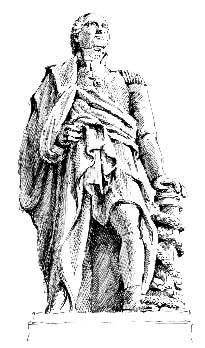
Collingwood’s smart family home in Morpeth still stands on the town’s oldest street, Oldgate, and is now a priest’s home. ‘Whenever I think how I am to be happy again, my thoughts carry me back to Morpeth,’ he once said, but he never returned there after Trafalgar and died at sea off Minorca in 1810. He is buried beside Lord Nelson in St Paul’s Cathedral.
Collingwood’s House in Morpeth
Emily Wilding Davison
1872–1913
Buried in the churchyard at Morpeth, under a headstone bearing the phrase ‘Deeds, not Words’, is EMILY WILDING DAVISON, a passionate suffragette who lived her life by Benjamin Franklin’s adage ‘Rebellion against tyrants is obedience to God’. She wrote this down on pieces of paper, which she then wrapped around rocks and threw at David Lloyd-George. She was frequently arrested, tried to fling herself off the roof of Holloway prison and went on hunger strike. On one occasion, when she blockaded her cell door, a warder fed a hose pipe through the window bars and filled the cell with ice-cold water. The door was broken down just before she drowned, but she managed to successfully sue the prison authorities.
On 4 June 1913, at the Epsom Derby, carrying a banner of the Women’s Social and Political Union, she stepped out in front the King’s horse, Anmer, and tried to grab the reins, but was trampled under foot and died from her injuries a few days later. Her handbag was found to contain a return ticket to Epsom and a diary full of forthcoming events, which seems to indicate that she was not intending to commit suicide. Although her death had no immediate effect, she became an enduring symbol of the fight for women’s rights, and her brave but foolish gesture undoubtedly brought votes for the women of England much closer – it may indeed have done more for the extension of English democracy than her fellow Northumbrian Earl Grey’s Great Reform Act.
Born in Northumberland
MARY ASTELL (1666–1731), author of A Serious Proposal to the Ladies for the Advancement of Their True and Greatest Interest, regarded as the first English feminist, was born in NEWCASTLE.
SIR GEORGE AIREY (1801–92), Astronomer Royal responsible for establishing Greenwich as the Prime Meridian, was born in ALNWICK.
Footballers JACKIE MILBURN (1924–88) and the World Cup winning CHARLTON brothers JACK (b.1935) and BOBBY (b. 1937) were all born in ASHINGTON.


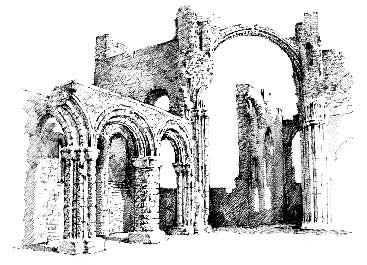


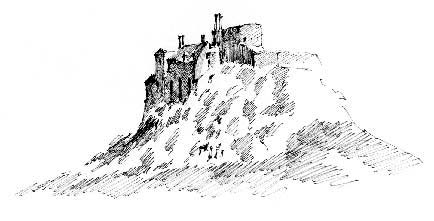


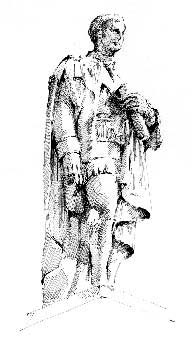
 knew this
knew this 
